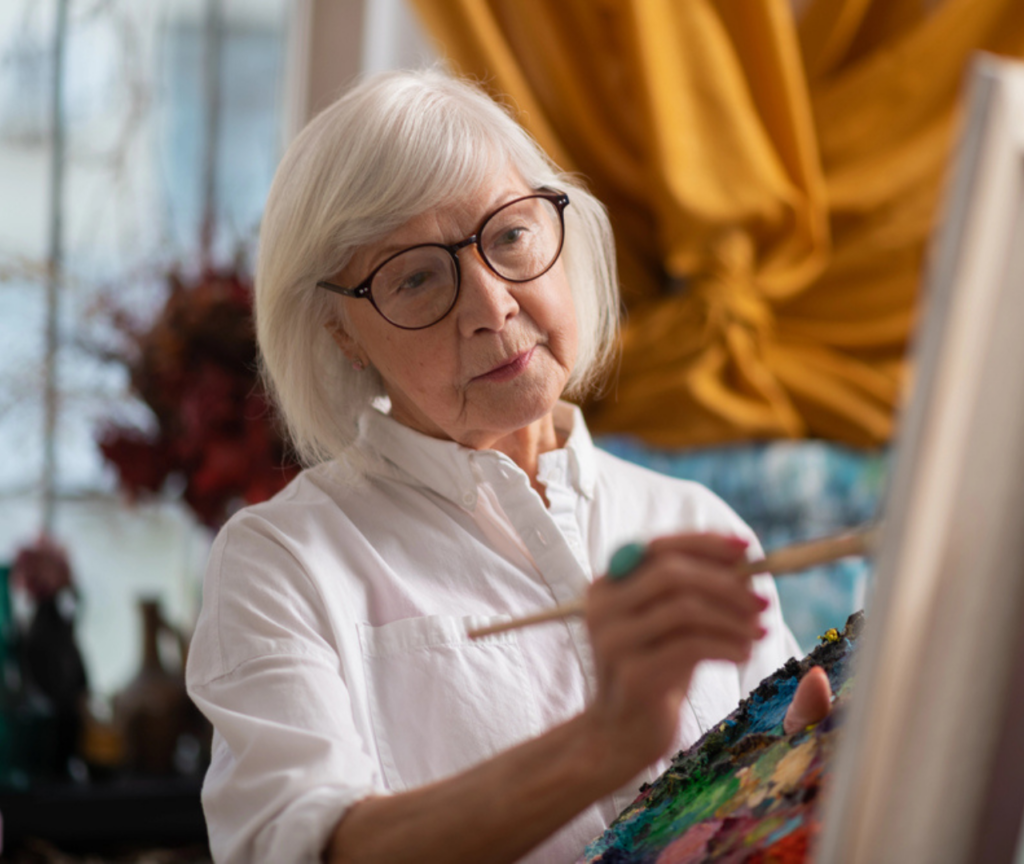Art therapy is a powerful and therapeutic method used to support mental and emotional well-being, and it has become increasingly popular in assisted living communities. As seniors face challenges related to aging, such as cognitive decline, physical limitations, and emotional struggles like depression or loneliness, the introduction of art therapy can provide numerous benefits. By engaging in creative activities, seniors can express their emotions, boost their cognitive abilities, and enhance their overall quality of life. This heartwarming approach not only promotes healing but also fosters social connections and a sense of accomplishment.
The Role of Art Therapy in Assisted Living Communities
Art therapy involves using various forms of creative expression, such as painting, drawing, sculpture, and even music or dance, to help individuals process emotions, reduce stress, and improve overall well-being. In assisted living communities, art therapy can be adapted to the needs and abilities of seniors, making it accessible and beneficial regardless of cognitive or physical limitations.
The use of art therapy in assisted living centers has proven to be especially helpful for individuals suffering from dementia and Alzheimer’s disease. Engaging in creative expression can stimulate brain function, improve cognitive skills, and enhance communication abilities, which are often impaired in those with dementia. Studies have shown that art therapy can reduce agitation, anxiety, and depression in patients with Alzheimer’s, offering a safe and gentle outlet for expression when words are no longer easy to come by.
Cognitive and Emotional Benefits
One of the most significant advantages of art therapy is its ability to promote cognitive function. Seniors often experience a decline in memory, concentration, and problem-solving abilities as they age. However, engaging in art allows them to practice these skills in a non-threatening and enjoyable way. Whether creating a simple drawing or engaging in more complex tasks like sculpting, art encourages mental stimulation, improves focus, and helps to maintain or even enhance cognitive function.
Emotionally, art therapy can be incredibly therapeutic. Many seniors, especially those in assisted living, deal with feelings of loss, isolation, or depression. The creative process can provide a meaningful distraction and an opportunity for self-expression. Seniors may find that through painting or drawing, they can explore feelings and experiences that are difficult to articulate verbally. This emotional release fosters a sense of accomplishment and emotional well-being. Additionally, the act of creating art can promote relaxation and reduce stress, similar to other mindfulness activities such as meditation or yoga.
Improving Social Connections and Community Engagement
Art therapy in assisted living communities also plays a crucial role in fostering social interaction and building a sense of community. Art sessions are often group-based, where residents collaborate on projects or share their individual works with others. This social interaction not only enhances the sense of belonging but also reduces feelings of loneliness and isolation that are common among seniors in long-term care.
Participating in group art activities provides a platform for seniors to connect with others who share similar interests or experiences. These group sessions can spark meaningful conversations and friendships, promoting social bonds that are essential for mental health. The social nature of art therapy also creates a supportive environment, where seniors encourage and motivate one another. This kind of positive social interaction is vital for emotional well-being and can greatly enhance the quality of life in an assisted living setting.
Physical Benefits and Adaptations
While the primary focus of art therapy is often on mental and emotional health, there are physical benefits as well. Many art activities require fine motor skills, such as gripping a paintbrush, cutting paper, or molding clay. For seniors with arthritis or limited dexterity, art therapy can help improve hand-eye coordination, finger strength, and mobility. Additionally, art therapy can provide gentle physical activity, promoting muscle movement and flexibility in a non-strenuous way.
For seniors with more advanced physical limitations, art therapy can be modified to suit their abilities. For example, using adaptive tools, like specially designed brushes or large pieces of paper, can help seniors with motor difficulties participate fully in creative expression. The flexibility of art therapy makes it an inclusive activity that can benefit seniors at all levels of physical ability.
Creating a Therapeutic Environment
To make art therapy truly effective, the environment plays an important role. Assisted living communities should create designated spaces that are comfortable, well-lit, and free from distractions. These spaces should be stocked with a variety of materials that cater to different interests and abilities, from watercolors and sketchbooks to clay and textiles. A welcoming and encouraging atmosphere will help seniors feel at ease, fostering a sense of creativity and openness.
The role of art therapists is also essential in creating a meaningful experience. Trained therapists guide seniors through the creative process, providing gentle encouragement and offering tailored exercises based on each resident’s abilities. Therapists also offer emotional support and can help residents interpret the emotions or memories that arise during the art-making process.
Conclusion
Incorporating art therapy into assisted living communities is a heartwarming approach that significantly enhances the mental, emotional, and physical well-being of seniors. From improving cognitive function and reducing depression to fostering social connections and offering a therapeutic outlet, art therapy provides a wide array of benefits. For seniors facing the challenges of aging, art therapy offers a creative and empowering way to engage with the world, express their feelings, and improve their overall quality of life. It’s an invaluable tool that encourages healing, personal growth, and connection, helping seniors thrive in their later years.

